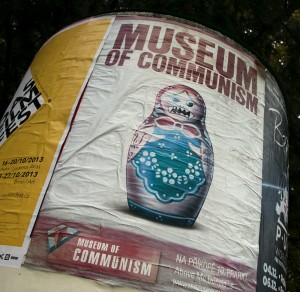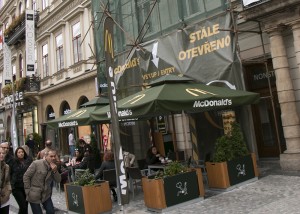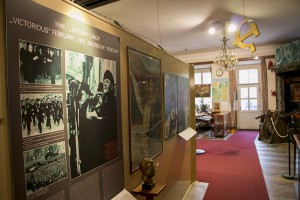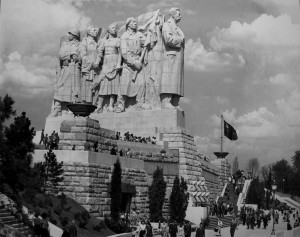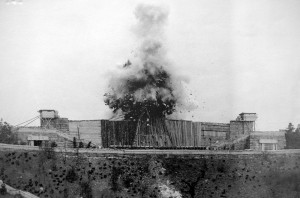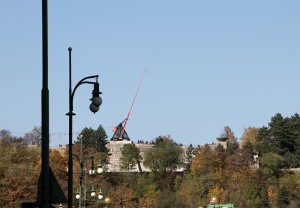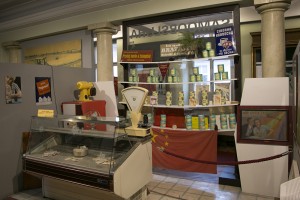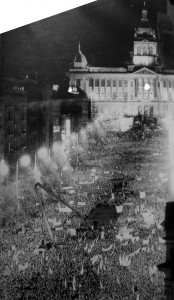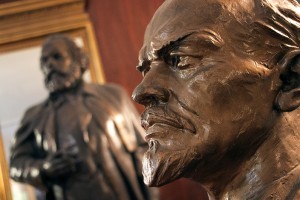I’m fascinated by the fading vestiges of Communism. Back in high school German class when Frau Andersson taught us about die Mauer (the Wall), it seemed like it would endure for generations.
And then it was gone.
Prague’s Museum of Communism is located above a McDonald’s. Of course it is.
Uncle Joe (Stalin), oblivious to history’s march, presides over the museum’s cramped hallways.
Prague has a Stalin story to tell. In 1948, the Communist Party of Czechoslovakia staged a coup and took over the country. Work commenced on a huge monument to the Soviet leader. Construction took more than five years, and with good reason: this representation of Stalin at the head of a line of patriots was huge.
For scale, look for the actual people in this photo- those little dots halfway up.
The statue was unveiled on May 1, 1955. It was over 15 meters high! It was the largest representation of Stalin in the world! You can practically hear the men’s chorus warming up for a stirring rendition of a heroic anthem!
Just one problem. Joseph Stalin had died in 1953, and the process of de-Stalinization had begun. Soviet leaders were turning away from the brutal legacy of their former General Secretary/dictator/egomaniac. A giant granite likeness of him seemed a bit out of place.
What to do? Get rid of it.
But, the story goes, the Communists wanted to avoid the embarrassment of slowly dismantling the epic edifice. So one day in 1962, without warning, they blew it up.
Nowadays, a rather lame metronome sits on the statue’s base, a touching symbol of, um, the passage of time or some such nonsense.
I’ve got no love for Stalin, but his statue was undeniably the more accomplished work of art. Let’s take a moment to remember its sculptor, Otakar Švec, who committed suicide the day before it was unveiled.
The museum’s exhibits, like this sterile replica of a Cold War-era shop, didn’t do much for me. Feeling a bit of Commie fatigue, I wandered into a stuffy screening room, sat down on a hard bench, and watched a video that made it all worthwhile: no-frills news footage of the Czech people pouring into the streets of Prague in 1989 and demanding their country back.
When it looped, I stayed to watch it again. My heart broke as regular people in puffy coats and stone-washed jeans (it was the Eighties, after all) stood up to police in riot gear, with sometimes bloody results. This wasn’t soundless black and white film of our grandparents going to war; this was VHS-quality video that reminded me of home movies shot in my backyard in Brookfield (possibly shot with the same Quasar model I used). The course of history changed one day while I was sitting down to Thanksgiving dinner, a newly-minted college freshman.
I guess that’s why I’m fascinated by the remnants of the Cold War world that I came of age in just as it drew its last breath. Even with all the masterful propaganda, the towering granite, the parades in Red Square, and Frau Andersson’s resigned inevitability… the people won.
Is that a tear in your eye, Vladimir?
Communistalgia
February 10th, 2014 | by Ken
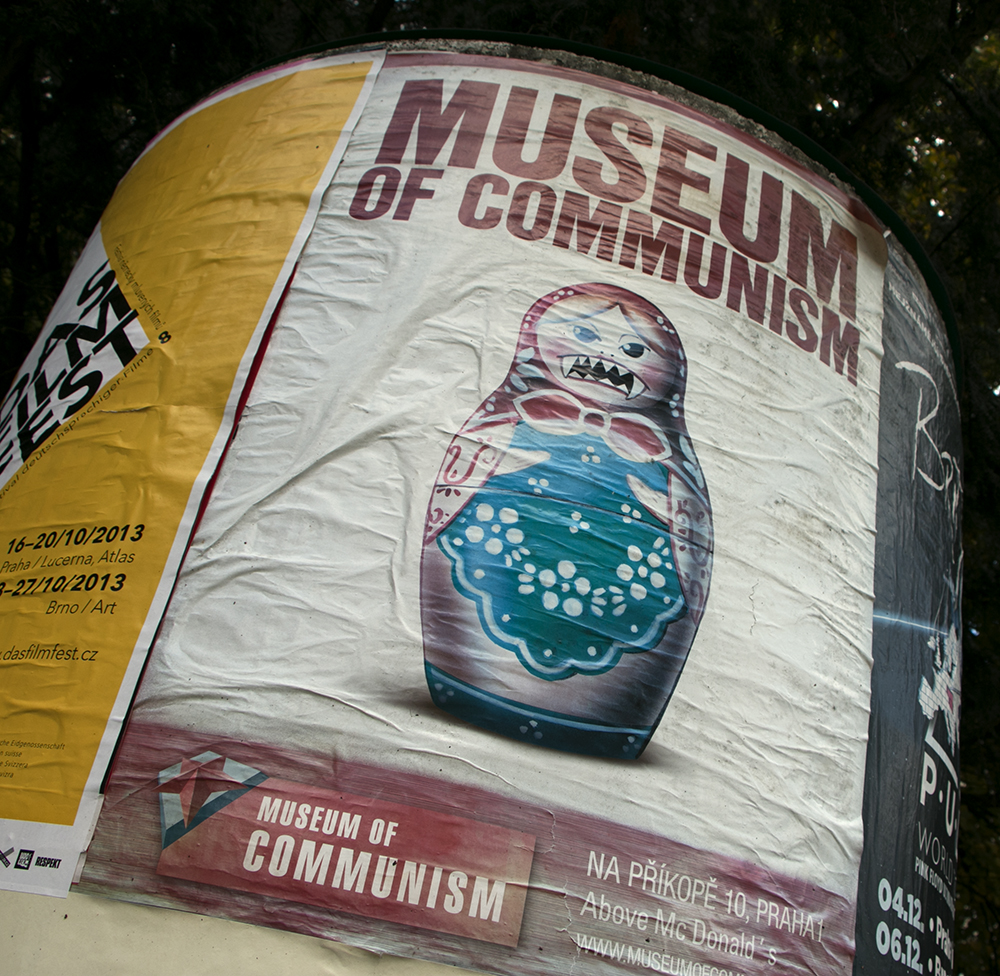
I’m fascinated by the fading vestiges of Communism. Back in high school German class when Frau Andersson taught us about die Mauer (the Wall), it seemed like it would endure for generations.
And then it was gone.
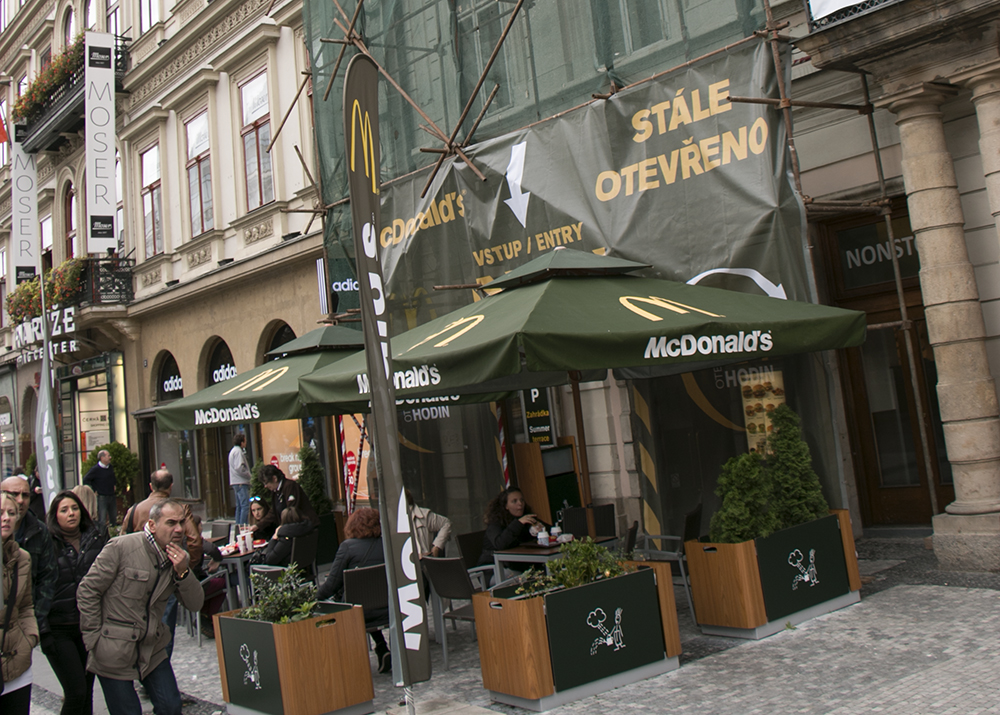
Prague’s Museum of Communism is located above a McDonald’s. Of course it is.

Uncle Joe (Stalin), oblivious to history’s march, presides over the museum’s cramped hallways.
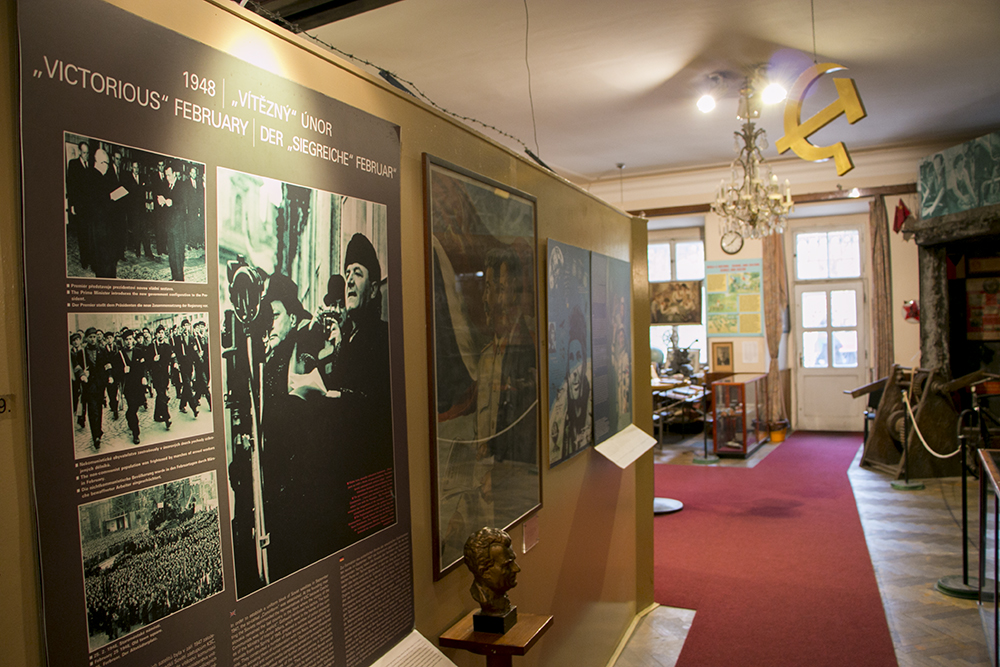
Prague has a Stalin story to tell. In 1948, the Communist Party of Czechoslovakia staged a coup and took over the country. Work commenced on a huge monument to the Soviet leader. Construction took more than five years, and with good reason: this representation of Stalin at the head of a line of patriots was huge.
For scale, look for the actual people in this photo- those little dots halfway up.
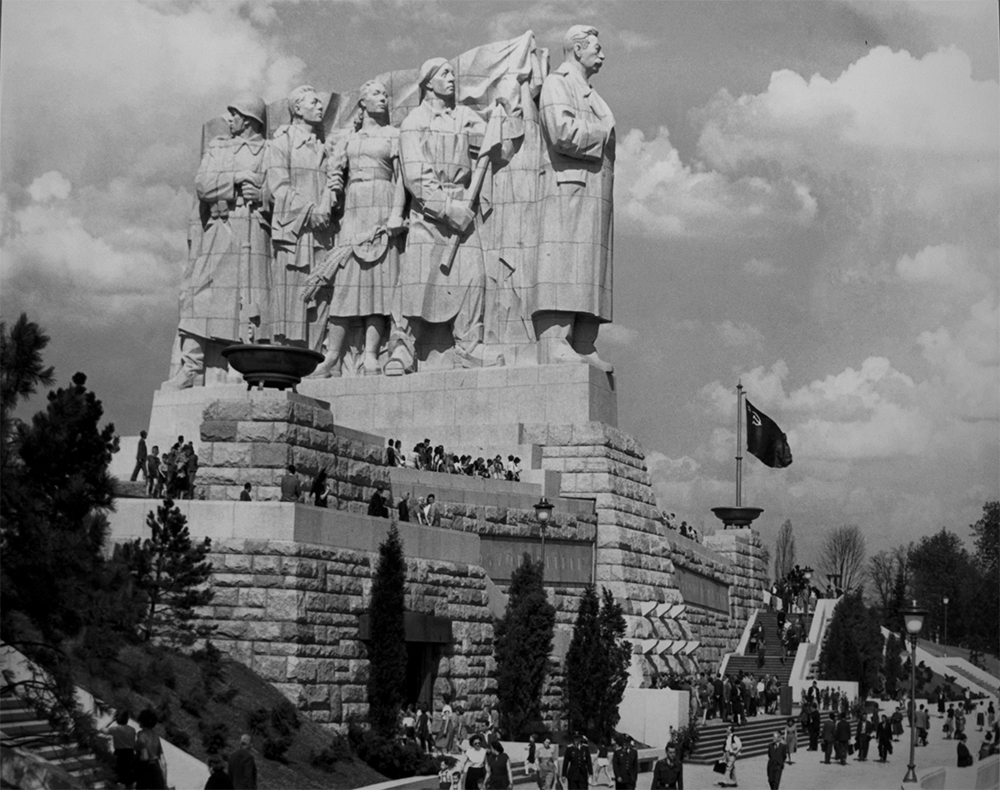
The statue was unveiled on May 1, 1955. It was over 15 meters high! It was the largest representation of Stalin in the world! You can practically hear the men’s chorus warming up for a stirring rendition of a heroic anthem!
Just one problem. Joseph Stalin had died in 1953, and the process of de-Stalinization had begun. Soviet leaders were turning away from the brutal legacy of their former General Secretary/dictator/egomaniac. A giant granite likeness of him seemed a bit out of place.
What to do? Get rid of it.
But, the story goes, the Communists wanted to avoid the embarrassment of slowly dismantling the epic edifice. So one day in 1962, without warning, they blew it up.
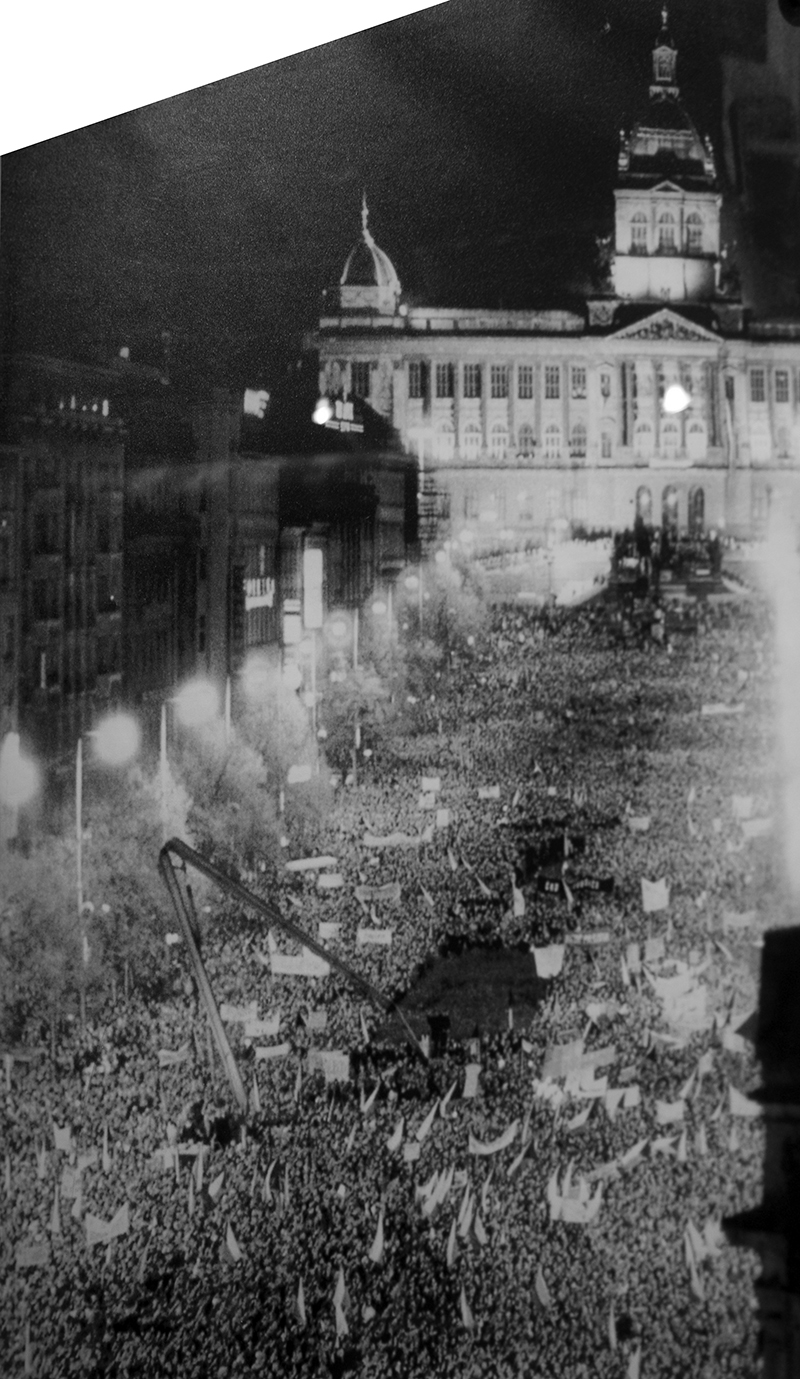
Wenceslas Square, November 23, 1989

